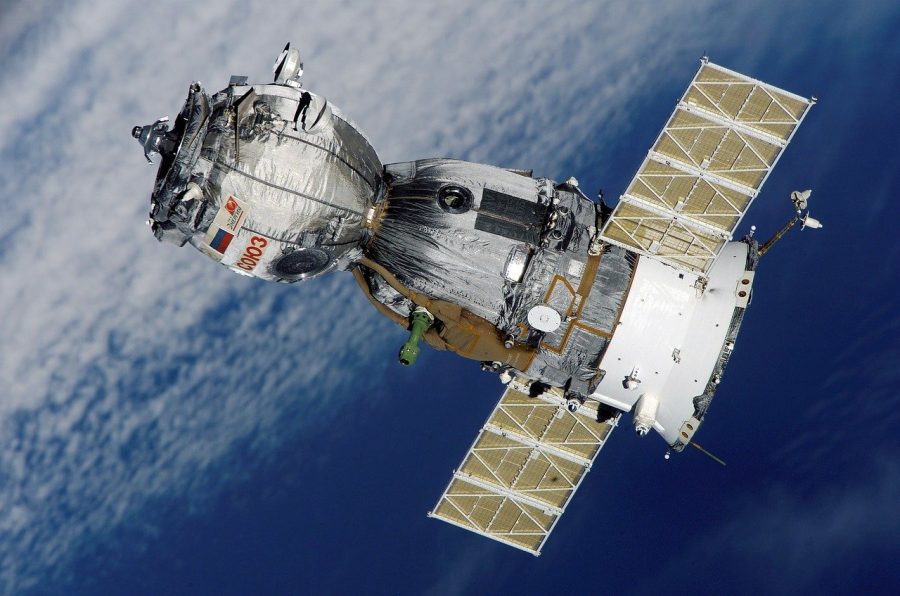WHAT IS A CUBESAT?
The past decade has witnessed a significant change in the space industry, with the advent of what is sometimes referred to as “New Space.” This method of satellite deployment differs from previous methods in that it uses the miniaturisation of electronics to create smaller, more capable spacecraft that can be launched in greater numbers and at a reduced cost.
At the same time, there has been a surge in potential uses for data collected from space and services delivered from space, such as satellite communications or Earth observations. New Space technology has been perfectly positioned to meet these demands, with a faster time to market than traditional spacecraft.
A CubeSat is a type of tiny satellite that has grown in popularity due to well-defined standards, which aim to reduce expenses and development time. The CubeSat standard was created by California Polytechnic State University (Cal Poly) and Stanford University, with the primary goal of scientific research and exploration of new space technologies. CubeSats have made their way into business projects and are now viewed as one of the quickest and most cost-effective ways to demonstrate space technologies or provide a service from space.
WHAT IS THE CUBESAT SPECIFICATION?
The CubeSats must adhere to the specifications defined in the CubeSat specification, which was released by Cal Poly. They are comprised of 10x10x10cm modules (also known as 1U size) and demand no more than 1.33kg each. They frequently employ off-the-shelf components to save money, which might include electronics, subsystems, and even software. CubeSats come in a variety of sizes, including 1U, 2U, 3U, 6U+, to allow for more functions and intricate technology.
HOW LONG DOES IT TAKE TO BUILD A CUBESAT?
One of the main benefits of a CubeSat is its quick development and launch timeline. A CubeSat might be developed, tested, and launched in as little as 9 months, but it usually takes 18 to 24 months to finish because
The rapid development of complex yet dependable spacecraft at a low cost and within time constraints is possible thanks to the wide utilization of off-the-shelf components for electronics and subsystems, which is one of the basic principles behind CubeSat mission creation. It enables CubeSats to create sophisticated yet operational spacecraft in a short amount of time with minimal investment.
The spacecraft combat software may also be an off-the-shelf component in the construction of CubeSats. In order to make it available early in the design process for rigorous testing and successful integration, like other subsystems, flight software may also be readily accessible.
Our own FSDK (Flight Software Development Kit) is a good example of off-the-shelf spacecraft flight software. Using our huge library of pre-validated and configurable off-the-shelf components, developers can quickly construct their own unique mission software package using our FSDK (Flight Software Development Kit).
If you need help building a cubesat checkout Bright Ascension.
HOW TO BUILD A CUBESAT THAT WORKS
Despite the fact that the worldwide CubeSat market is currently booming, one factor is consistently true: reduced expenditures and quick space mission creation might lead to more failures. Because there are no practical ways for engineers to access the CubeSat to resolve any potential problems once in orbit, it must operate without fault. To enhance dependability, rigorous testing and sturdy components may be beneficial.
Software for a CubeSat is like the “glue” that binds all of its component systems together, and getting it right is essential to keeping the spacecraft reliable. To allow for rigorous testing and sensible integration, the flight software package must be simple and effective so that it can be used early in the space mission’s development process and adaptable to meet any changes in requirements.
HOW TO BUILD A CUBESAT THAT DOESN’T BREAK THE BUDGET
The increasing availability of mass-market components, as well as standardisation and wide use of off-the-shelf components, allows developers to control costs while keeping prices constant and reducing the need for special talents and resources.
Developers want to guarantee that the spacecraft flight software package may be developed quickly and without the need for special talents, so most of their time is spent on the unique components of the mission.
The FSDK was created to make it simple and easy for developers to create software products quickly. It’s also an open system, so it may be readily expanded to utilize new subsystems, hardware, and software components. This implies that it grants access to the best available and most cost-effective off-the-shelf components on the market.
HOW MANY CUBESATS HAVE THERE BEEN?
As of April 4, 2021, 1553 CubeSats have been sent into orbit and it is expected that over 2500 CubeSats will be deployed in the next six years! Such a highly competitive market may make entry difficult for newcomers.
The techniques outlined in this post can help you supplement your current space experience with unique, entertaining, and informative activities to ensure that your child has a fun-filled day.
At Bright Ascension, our goal is to push the boundaries of innovation. We provide a one-of-a-kind and innovative approach to spacecraft flight software development for rapid, cost-effective and efficient CubeSat mission creation and management.
Our product overview section goes into greater depth on the technology that underlies our services, as well as why CubeSats are ideal for space missions. Alternatively, book a demo or try us out today.
Share It on :





